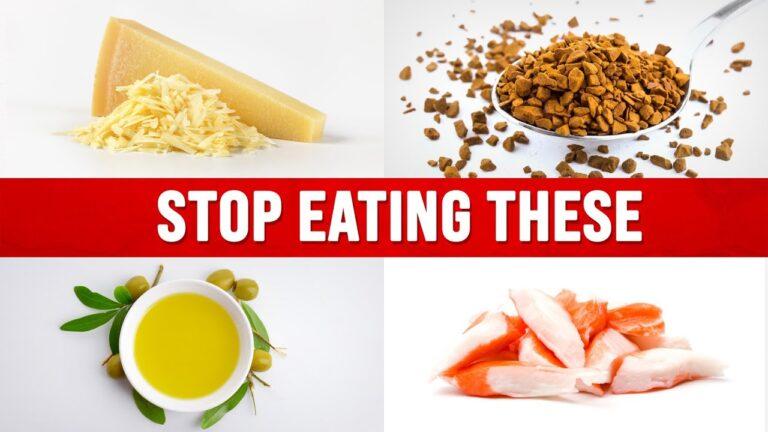What Are the Health Risks of Microplastics in Our Bodies? Plastics break down into tiny bits that are absorbed into our arteries, blood, and organs. Read on to learn about the potential harms and how to reduce exposure. It seems like microplastics are everywhere these days. These tiny plastics are in the air we breathe, the food we eat, and the water we drink. And they’re in our bodies, too, with recent research finding microplastics in our arteries. “The rate of increase in microplastics in the environment is exponential and we have every reason to believe that the concentrations in our bodies will continue to increase in the coming years and decades,” says Matthew Campen, PhD, a professor at the University of New Mexico College of Pharmacy in Albuquerque, who has researched microplastics. While there’s a growing body of evidence linking microplastics to a wide range of health issues, there’s not much definitive proof yet that these particles directly cause specific medical issues, Dr. Campen notes. “What scientists worry about is several trends in disease prevalence that have been unexplained — Alzheimer’s disease and dementia, colorectal cancer in people under 50, inflammatory bowel disease, and global reductions in sperm count,” says Campen, noting just some of the health problems that have been linked to microplastics in recent years. The New England Journal of Medicine (NEJM) , Campen says. Scientists found microplastics and nanoplastics — even tinier particles — inside arteries associated with a more than quadrupled risk of events like heart attacks, strokes, and premature death. Even though the study didn’t prove that microplastics directly cause heart problems, “The recent report in NEJM raises serious alarms,” Campen says. Read on to understand how much you should worry — and what you can do about it. What Are Microplastics and Where Do They Come From? Microplastics and nanoplastics are far too tiny to detect as you go about your daily life. Microplastics are less than 5 micrometers in size — thousands of times smaller than a grain of rice — and nanoplastics are below 1 micrometer. These tiny particles can turn up in a lot of places you might not expect. They’re in water bottles and other plastic containers (which might seem obvious) but also in makeup, personal care items and grooming products, clothing and textiles, and many foods and drinks, says Martha Gulati, MD, director of preventive cardiology at the Smidt Heart Institute at Cedars-Sinai in Los Angeles. “There is an enormous amount of degraded plastic pollution contaminating our planet Earth and we are inhaling and ingesting microplastics and nanoplastics every day and everywhere,” Dr. Gulati says. “They have been found even in remote areas like the Antarctic and Arctic, Mount Everest, and the ocean floor.” It’s easy for people to inhale or ingest microplastics because of their size and their ubiquity, and these plastic bits can accumulate over time. What Health Issues Are Linked to Microplastics? In lab experiments, microplastics clearly damage human cells, Gulati says. But what’s less clear is whether they might directly contribute to specific health problems. “The problem with the study of the specific toxicity of microplastics is that they are composed of different chemicals, many with different potential health effects,” says says Luz Claudio, PhD, a professor of environmental medicine and public health at the Icahn School of Medicine at Mount Sinai in New York City. One of the main health concerns about microplastics is their potential to be what’s known as endocrine disruptors — chemicals that interfere with the normal functioning of the body’s hormone system, Dr. Claudio says. “Many well-documented studies on laboratory animals point in this direction,” Claudio notes. As our exposure to microplastics continues to rise, and these tiny particles keep accumulating inside our bodies, scientists are concerned about what health issues may result, Claudio says. “No one really knows the answer to this, but this lack of conclusive knowledge does not mean that the effects are not important,” Claudio adds. RELATED: For the First Time, Microplastics Detected in Human Heart Tissue Can You Avoid Microplastics or Get Rid of Them Once They’re in Your Body? Even if the exact health risks aren’t clear, there are certainly no benefits to microplastics building up over time inside the body. And even if you can’t completely avoid exposure, there are things you can do to limit it, says Jessica Goddard, PhD, chief science officer at Tap Score and SimpleLab, a water testing startup in Berkeley, California. “We can absolutely limit our exposure to microplastics and we can reduce our contribution to the broader microplastics pollution problem,” Dr. Goddard says. For example, you can limit exposure to microplastics in drinking water by using a home filtration system for tap water and by avoiding disposable plastic bottles. When it comes to breathing microplastics, you can take steps to limit indoor air pollution that contains particles shed by carpets and furniture items made from plastic fibers. “We’re surrounded by plastic products, so I try to think about what purchases will give me the highest impact for the greatest risk reduction,” Goddard says. “This may be different for everyone. The highest impact being things I’ll use over and over again, and mitigating the greatest risk means thinking about the route of exposure and the susceptibility and vulnerability of the exposed.” In Goddard’s case, she chose glass bottles instead of plastic for her baby. “Babies are particularly vulnerable and so are usually at greater risk from exposures,” Goddard says. “Baby bottles are used over and over and heated regularly, so making the plastic-alternative choice has a great impact.” The choices might look different for another person or family. For some it might mean seeking out clothing and home textiles made from natural fibers; for others it could involve ditching plastic food containers. Doing what you can is important because there’s no way to remove microplastics from your body once absorbed. “You cannot detox,” Goddard says. Editorial Sources and Fact-Checking Everyday Health follows strict sourcing guidelines to ensure the accuracy of its content, outlined in our editorial policy. We use only trustworthy sources, including peer-reviewed studies, board-certified medical experts, patients with lived experience, and information from top institutions. Sources Marfella R et al. Microplastics and Nanoplastics in Atheromas and Cardiovascular Events. The New England Journal of Medicine . March 7, 2024. Resources Leslie HA et al. Discover and Quantification of Plastic Particle Pollution in Human Blood. Environment International . May 2022.
This content was originally published here.




















